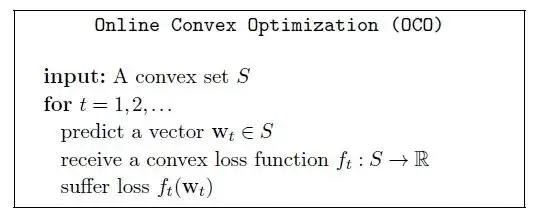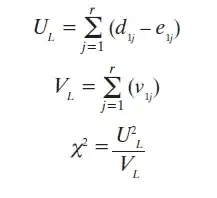In theoretical point of view S1 seems me the correct answer, in fact your material says this.
Seems me that your material give you a simple but exhaustive explanation. In fact is wrote:
Obviously S1 is correct. It can be broadly thought that the model
exist in nature but is unknown to the experimenter.
This is a paradigm for causal inference; in this sense you can think about the model as a structural equation. Sometime this model is called true model also. The interpretation of the true model can be different and those difference can produce many problems, in my view the structural equation interpretation is the correct one. More important this interpretation is the closest on affirmation given in your material and reported above. In any case to read here can be useful: What is a 'true' model?
If the structural model is completely known there are nothing to “infer from data”. This can be true in simulations but in real world you never can be completely sure to know the true model exhaustively. Here start the tentative to “model the reality”, model the real link about real variables (data). This is the “to move to the backward direction” intended in your material. The regression can be useful about this scope. Here can seems that we move from data to model but this is only an impression because, if we work properly, we collect data with a theory in mind and it, at least ideally, refers on true model (then S1 holds).
I don’t know what your material is precisely focused on, however you have to known that:
the regression is a free concept, it per se say nothing about the nature and meaning of the data. Under very general conditions you can perform regression on the data you want regardless the meaning of them.
In fact any regression can suffer from misspecification, where it is considered in comparison to the true model. The regression, even at population level, do not generate nothing "in nature". What generate $Y$ is the data generating mechanism (= structural equation = true model); very different concept.
Many problems come from misunderstanding about this and related points. To read here can help: endogenous regressor and correlation
Regression and causality in econometrics
Does homoscedasticity imply that the regressor variables and the errors are uncorrelated?
Now some warnings. I repeat that I don’t know what your material is precisely focused on and the fact that it, as many other source, speak about “model” in too general manner do not help us. Sometimes this “model” are focused on causal problem, sometimes else no, sometimes other is not clear. Is possible to speak about “model” like S1 without giving it any causal/ theoretical/ substantive meaning. I do not appreciate much this possibility but, more important, it is not consistent with the affirmation, of your material, reported above. To read here can help: Structural equation and causal model in economics
Finally, the question on your book is referred on the true model. In fact all the models built by researchers do not generate nothing "in nature". Them can generate predictions. Now, referring to the built/specified by researchers models and regardless the meaning of true model, we can be focused on pure prediction. Only in this case your own model, at least in finite sample and then in practice, should be completely data driven. In this case only I feel that S2 can be saved. S1 become useless more that incorrect, because we are not focused on discover the true model. To read here can help: Endogeneity in forecasting

